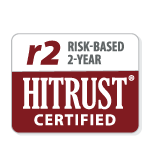Published on .
In a world dominated by a nonstop stream of 24/7 “breaking news” on TV, social media and other online outlets, it seems strange to be worrying that information isn’t available when and where we need it. However, when it comes to meaningful, trustworthy and personalized education about prescription medications, vaccines and other therapies, that’s exactly what health plans and other healthcare industry stakeholders have to be concerned about.
The endless background buzz of contradictory research, misinformation (intentional or otherwise) and unvetted opinions is making it extremely difficult to connect people with the information they need to make better decisions about their health—especially when those people are high-risk, complex members who may be difficult to engage through traditional methods.
These members often struggle with social determinants of health (SDOH) that make it even more challenging to access, absorb and act upon healthcare information. These hurdles often include lower health literacy rates, plus reduced ability to engage with the healthcare system often enough to discover what clinicians have to say about vaccines, medications and chronic disease management.
Hard-to-reach members are found in all socioeconomic, ethnic groups and age groups, presenting a serious problem for those across the healthcare ecosystem looking to improve medication adherence rates, encourage vaccinations for infectious diseases and support healthier behaviors for people with long-term conditions.
Health plans, providers and others across the healthcare continuum need to find more accessible and reliable methods of cutting through the noise and providing tailored education to these populations, particularly around the availability of affordable, effective medications and care strategies.
Digital telepharmacies have the tech-enabled services necessary to reach these members. With intelligent analytics that integrate patient-specific plan benefit and drug pricing information, advanced tools such as smart pill dispensers to support home care, and timely proactive outreach throughout the year, tech-enabled digital telepharmacies are uniquely positioned to connect with high-risk individuals, deliver valuable health and medication information and engage hard-to-reach populations.
The changing landscape of member communications
Health plans, pharmaceutical manufacturers, life sciences companies and healthcare providers have historically leveraged TV, print and radio communications to connect with their audiences and offer insight into the latest medications and treatments available. But with the rise of internet-based entertainment sources, including video streaming services and social media, attention spans have become increasingly fragmented.
It has become both easier and more difficult to make oneself heard in this new world. While print, TV and radio ads used to be the sole provenance of large entities with the budget to pay for them, now anyone can purchase a hyper-targeted ad on their favorite social media platform to share whatever message they wish.
This is a big problem for healthcare stakeholders who are bound by strict regulations around the advertising of pharmaceuticals, procedures and other treatments. An “infodemic” of misinformation has been building for years, drowning out legitimate medical facts and making already-skeptical individuals even less likely to trust what experts have to say.
One study found that up to 87 percent of social media posts about healthcare topics contain misinformation, with posts about vaccines, diets, cancer and medical treatments among the worst offenders. False information can lead to confusion or more risky behaviors, ultimately leading to poor outcomes and poor experiences for members, as well as higher costs for their health plans.
Leveraging digital telepharmacies to cut through the noise
Fortunately, there is one thing people still agree on in this divisive age: their trust in pharmacists. The most recent Gallup poll on occupational trustworthiness ranked pharmacists as the fourth most-trusted profession, continuing a multi-year streak of high public approval.
This is where digital telepharmacies come into play. Partnering with digital telepharmacies makes it easier to share accurate, personalized information with patients and has the potential to be more impactful than traditional methods of communication (e.g., TV ads, emails and provider consultations).
Combined with a comprehensive tech-enabled approach to manage medication adherence, and drive member outreach and patient engagement, digital pharmacists can leverage sophisticated analytics to proactively target those in greatest need of guidance. Using motivational interviewing techniques and culturally sensitive strategies for addressing the social determinants of health, digital telepharmacies can effectively engage traditionally difficult-to-reach patients, build trust, create educational opportunities and encourage high-risk plan members to share their concerns. This is an important step on the road to medication adherence and improved health outcomes.
Because digital pharmacists are in regular contact with members throughout the course of the year, healthcare stakeholders can harness this trusted relationship to ensure individuals are able to access the most cost-effective and appropriate medications. Plans can work with companies like AdhereHealth to gain access to robust data analytics that are generated from multiple, disparate data sources and automatically integrated into intelligent clinical workflows that guide pharmacists as they engage members with high-risk healthcare needs. In addition to support with medication adherence, these engagements can also include tailored education on low-cost drug options and the importance of preventive care, such as vaccines and other routine healthcare services.
By treating the tech-enabled digital telepharmacy as a personalized, highly trusted venue for member engagement and education, healthcare stakeholders may be able to bypass the difficulties of being heard in more traditional media channels.
As a result, plans can improve engagement among high-risk members, control unnecessary prescription spending, increase adherence and ideally foster better long-term outcomes for complex individuals in hard-to-reach communities.
Interested in learning more about medication adherence and data-driven medication management technology? Explore our website www.adherehealth.com or schedule a 1:1 demonstration.
